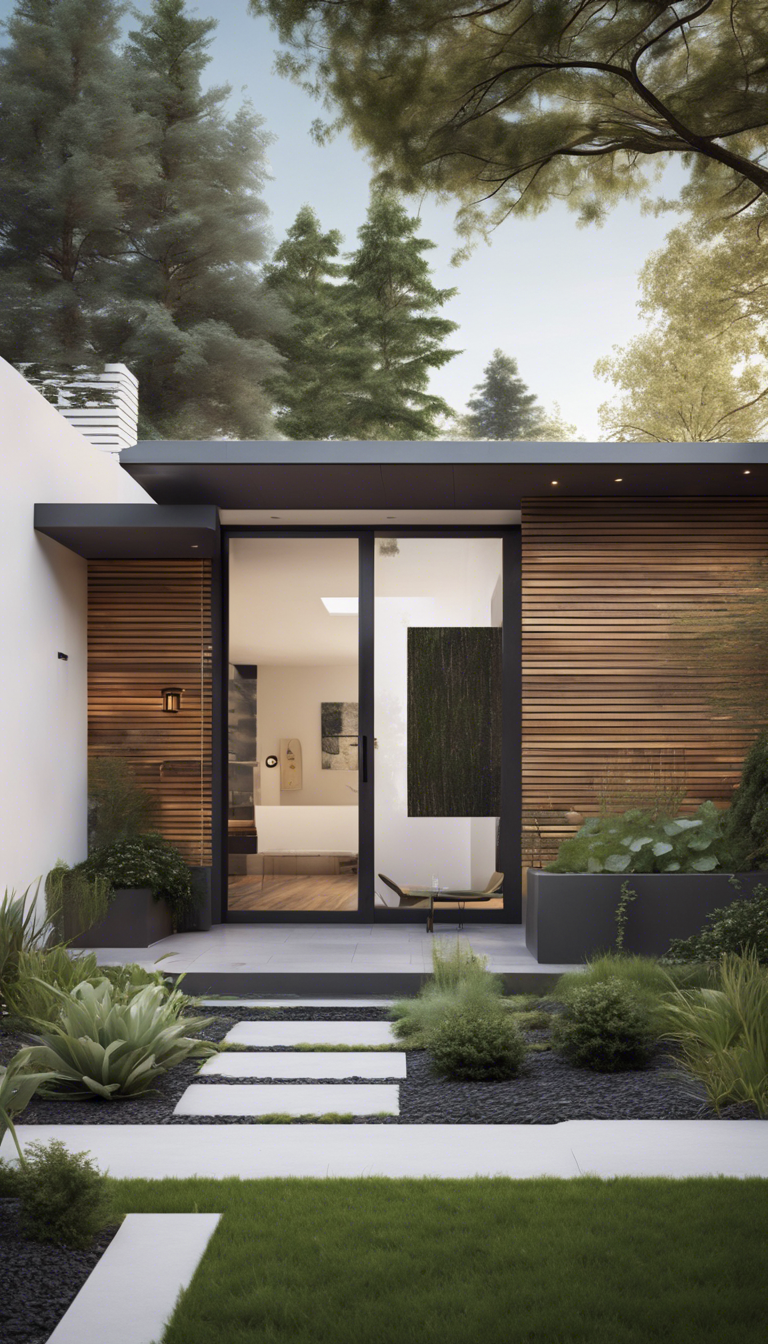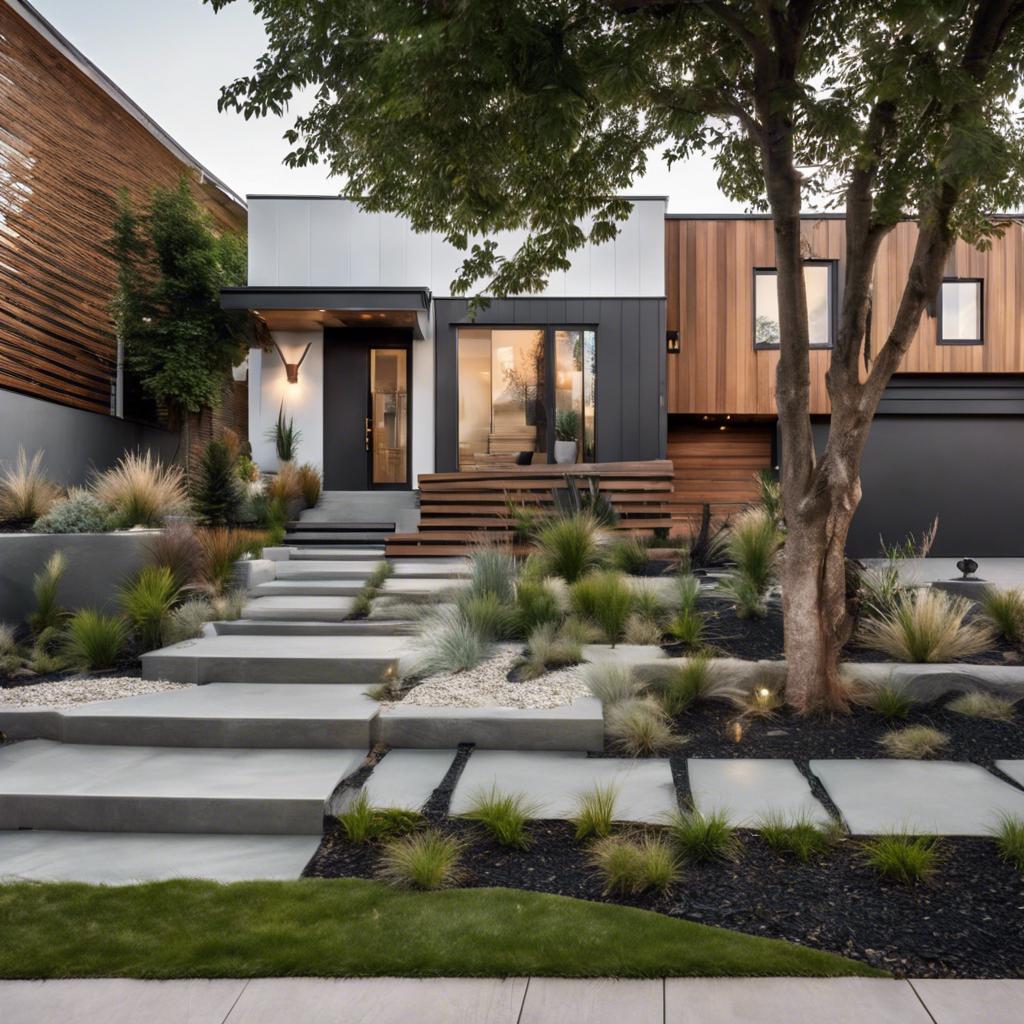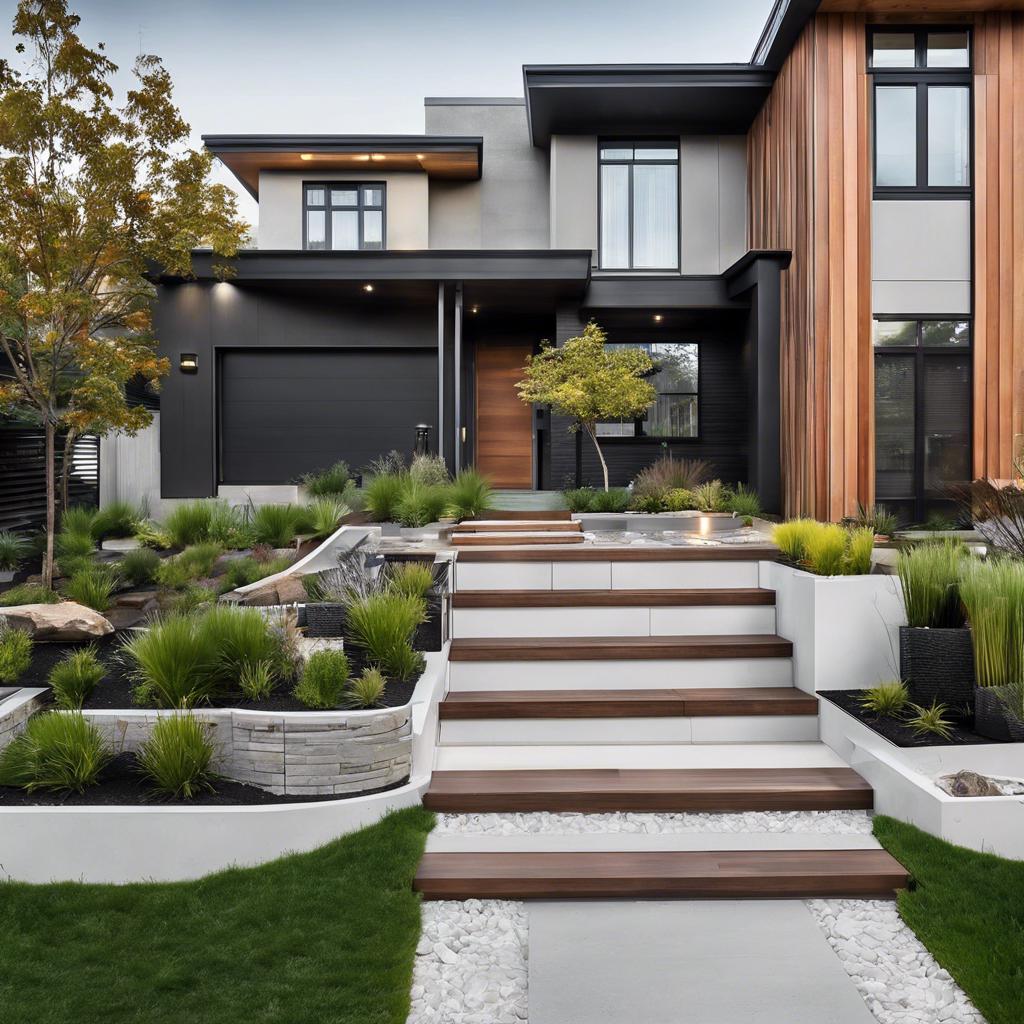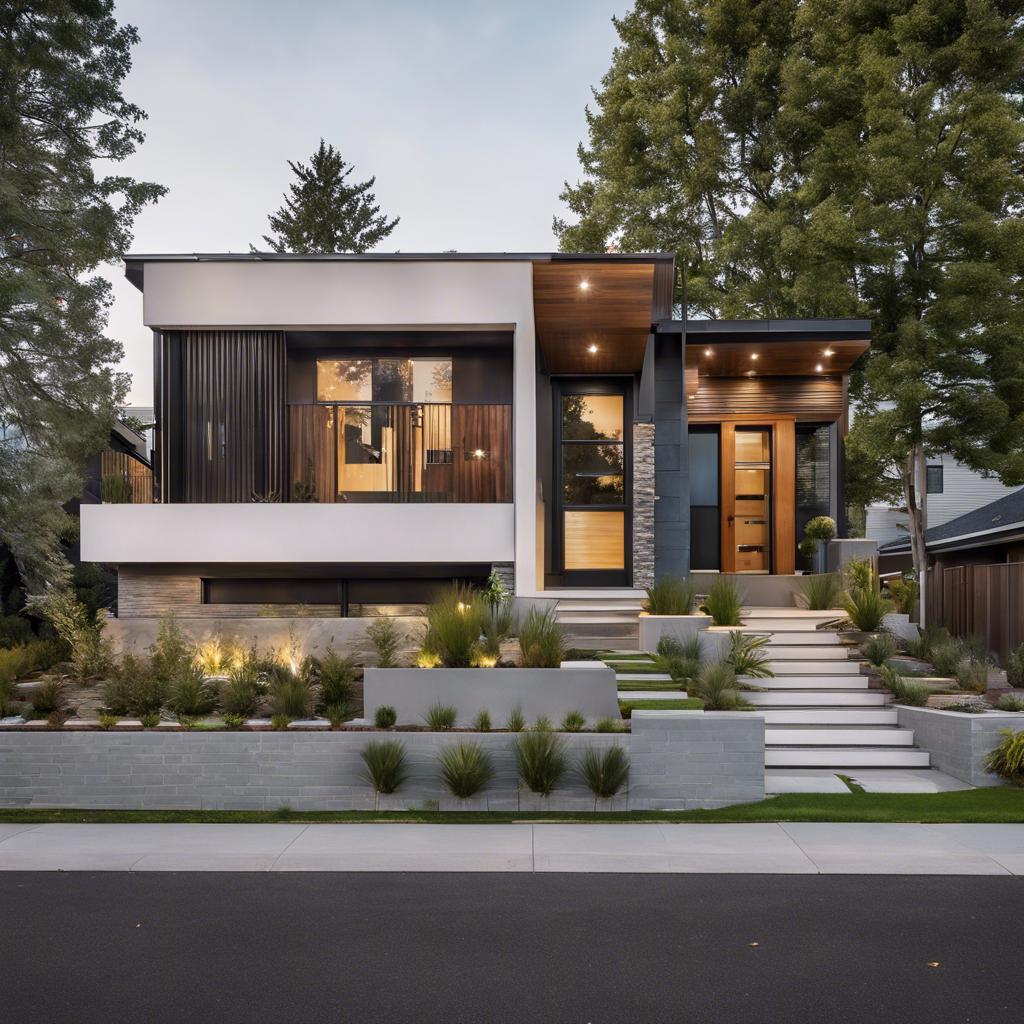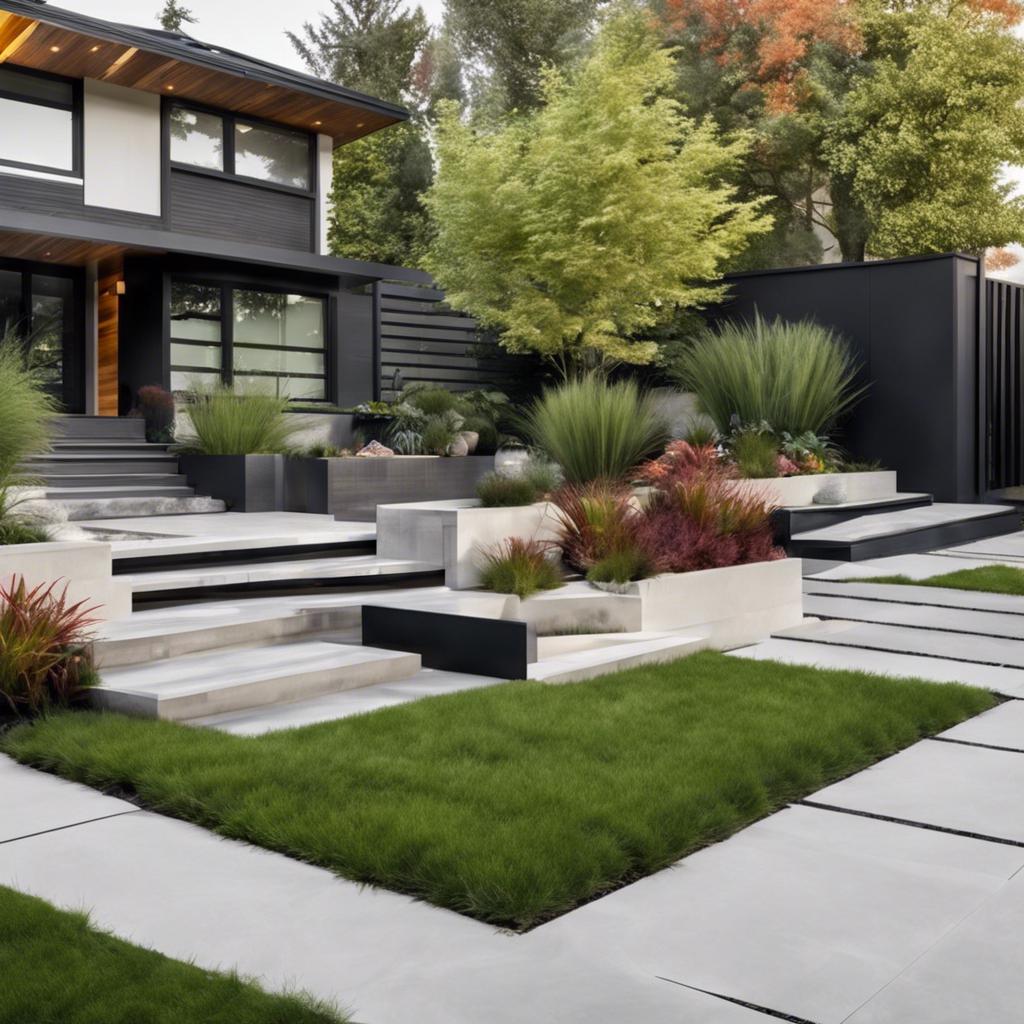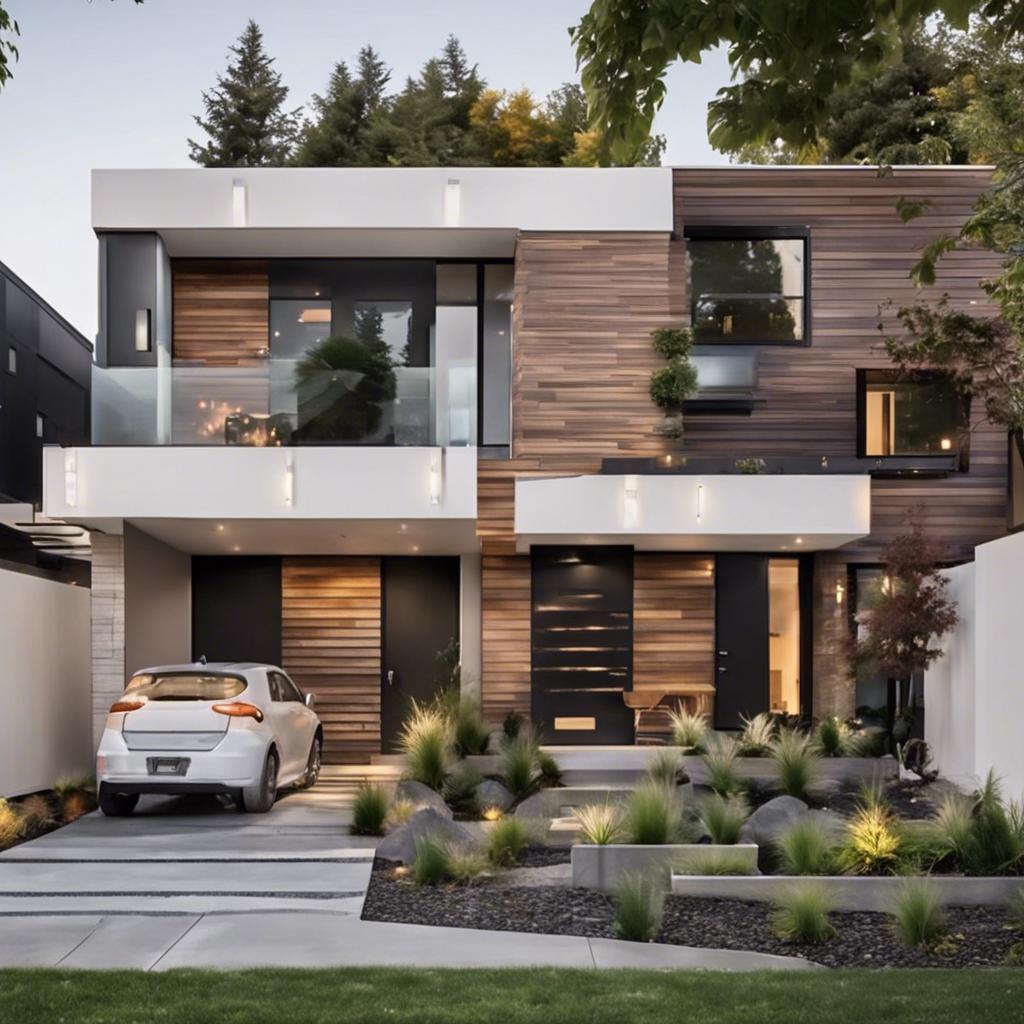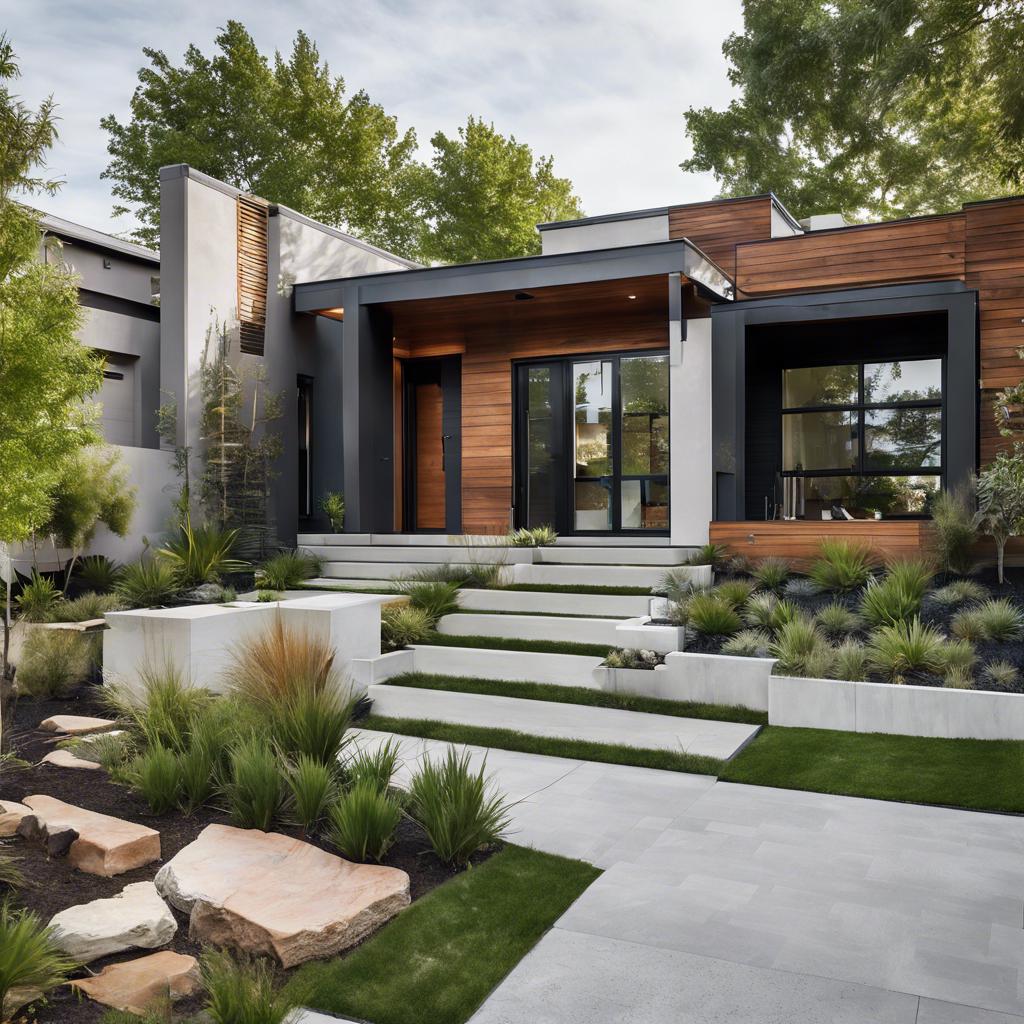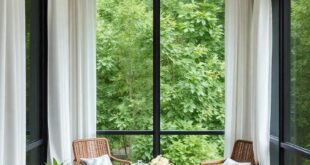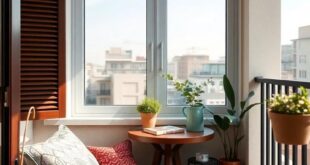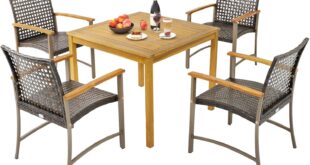The front yard of a home is often the first impression that visitors, neighbors, and passersby have of the occupants. As such, the design and aesthetics of this outdoor space have evolved over the years to reflect changing tastes, styles, and trends. From manicured lawns and traditional flowerbeds to contemporary minimalist designs and sustainable landscaping, the evolution of front yard aesthetics is a fascinating journey that mirrors our ever-evolving relationship with nature and the environment.
In recent years, modern design trends have been shaping the way we approach front yard landscaping. As we become more conscious of environmental issues and the need for sustainable practices, many homeowners are opting for water-wise gardens, native plantings, and eco-friendly hardscape materials. Additionally, the rise of outdoor living spaces and a blur between indoor and outdoor living have led to the incorporation of elements like outdoor kitchens, seating areas, and fire pits into front yard designs. The modern front yard is no longer just a space for curb appeal, but a functional and stylish extension of the home that reflects our values and priorities.
The Impact of Modern Frontyard Design on Property Value
Frontyard design has come a long way in shaping the overall aesthetic appeal of a property. Modern trends have revolutionized the way we approach landscaping, with a focus on sleek and minimalist designs that enhance curb appeal. From clean lines to sustainable materials, the evolution of frontyard aesthetics has had a significant impact on property values.
One of the key elements of modern frontyard design is the use of sustainable landscaping practices. Incorporating native plants, drought-resistant species, and efficient irrigation systems not only adds beauty to the property but also reduces water consumption and maintenance costs. Homebuyers are increasingly valuing sustainable features in frontyard design, making properties with eco-friendly landscapes more attractive in the real estate market.
Furthermore, the integration of outdoor living spaces in frontyard design has become a popular trend in modern landscaping. From cozy seating areas to fire pits and outdoor kitchens, creating functional and inviting spaces in the frontyard enhances the overall lifestyle experience of homeowners. These outdoor living spaces not only increase the usable square footage of the property but also create a welcoming ambiance for both residents and visitors.
Innovative Technology and sustainability in Modern Frontyard Design
When it comes to modern frontyard design, the integration of innovative technology and sustainability has revolutionized the way we approach outdoor spaces. The evolution of frontyard aesthetics has seen a shift towards sleek, minimalistic designs that prioritize functionality and eco-friendliness. With advancements in technology and a growing focus on sustainability, homeowners are now able to create stunning outdoor spaces that not only look beautiful but also contribute to a greener environment.
<p>One of the key design trends in modern frontyard aesthetics is the use of smart irrigation systems. These systems utilize sensors to monitor soil moisture levels and weather conditions, ensuring that plants receive just the right amount of water. By reducing water waste and promoting healthy plant growth, smart irrigation systems have become a popular choice for eco-conscious homeowners looking to achieve a lush, green frontyard.</p>
<p>Another important aspect of modern frontyard design is the incorporation of sustainable materials. From recycled composite decking to permeable paving stones, using eco-friendly materials not only reduces environmental impact but also adds a unique touch to the overall aesthetic of the frontyard. By combining innovative technology with sustainable design principles, homeowners can create a frontyard that is both visually appealing and environmentally responsible.</p>Utilizing Minimalist Elements in Modern Frontyard Design
When it comes to modern frontyard design, the focus has shifted towards utilizing minimalist elements to create a sleek and contemporary aesthetic. Gone are the days of cluttered and overly ornate frontyards, as homeowners are now embracing simplicity and clean lines in their outdoor spaces.
One key element of minimalist frontyard design is the use of streamlined landscaping features. This includes incorporating geometric shapes, such as rectangular planters or square pavers, to create a sense of order and symmetry in the space. By keeping the landscaping clean and structured, homeowners can achieve a modern look that is both visually appealing and low-maintenance.
In addition to minimalist landscaping, modern frontyard design often incorporates elements of sustainable living. This can include using drought-resistant plants, installing eco-friendly irrigation systems, and incorporating materials such as recycled wood or concrete. By blending sustainability with minimalist design principles, homeowners can create a frontyard that is not only beautiful but also environmentally conscious.
Blending Indoor and Outdoor Spaces in Modern Frontyard Design
In modern frontyard design, the integration of indoor and outdoor spaces has become a popular trend that brings a unique aesthetic to residential landscapes. By blending these two spaces seamlessly, homeowners can create a harmonious flow that enhances the overall appeal of their property. This design approach not only adds visual interest but also increases the functionality of the front yard, turning it into a versatile living area for relaxation and entertainment.
One way to achieve this blended indoor-outdoor aesthetic is through the use of large windows and sliding glass doors that connect the interior of the home with the outdoor space. These architectural elements allow natural light to flood into the living areas while offering uninterrupted views of the front yard. Additionally, incorporating outdoor furniture, rugs, and potted plants in the front yard can help create a cohesive look that blurs the boundaries between indoor and outdoor living.
Landscaping plays a crucial role in modern frontyard design, with a focus on creating inviting outdoor spaces that complement the architectural style of the home. Elements such as sleek planters, minimalist garden beds, and geometric pathways can help achieve a contemporary look that ties in with the overall design scheme. By thoughtfully selecting a mix of native plants, shrubs, and trees, homeowners can create a lush and inviting front yard that seamlessly merges with the indoors, adding to the overall curb appeal of the property.
” is about creating a seamless transition between the interior and exterior of the home, bringing a sense of unity and harmony to the overall design.”
The Role of Color Psychology in Modern Frontyard Design
Color psychology plays a crucial role in modern frontyard design, influencing the overall aesthetics and mood of outdoor spaces. With advancements in design trends, homeowners are now incorporating a wide array of colors to create visually appealing and inviting frontyards. By understanding the psychology behind different hues, designers can manipulate emotions and perceptions, ultimately enhancing the overall experience of the outdoor space.
In modern frontyard design, colors are strategically chosen to evoke specific feelings and create a harmonious environment. For example, cool tones such as blues and greens are often used to promote relaxation and tranquility, making them ideal for creating a peaceful retreat in the frontyard. On the other hand, bold and vibrant colors like reds and oranges can add a sense of energy and excitement, making the space feel more dynamic and stimulating for visitors.
Furthermore, the use of color psychology in modern frontyard design extends beyond aesthetics, as it also plays a functional role in enhancing functionality and practicality. For instance, using contrasting colors for walkways and pathways can help improve visibility and create a sense of direction for visitors. By carefully selecting colors that complement each other, designers can achieve a well-balanced and visually appealing frontyard that is both aesthetically pleasing and functional.
Smart Landscaping Techniques for Modern Frontyard Design
Modern frontyard design is all about integrating smart landscaping techniques to create visually appealing and functional outdoor spaces. Gone are the days of cookie-cutter lawns and haphazardly placed shrubs. Today, homeowners are embracing innovative ideas to elevate the aesthetics of their front yards.
One of the key trends in modern frontyard design is the use of sustainable landscaping practices. Incorporating native plants, drought-resistant varieties, and eco-friendly materials not only reduces water consumption but also contributes to a healthier ecosystem. By creating a balance between aesthetics and sustainability, homeowners can enjoy a beautiful front yard that is also environmentally responsible.
Another popular trend in modern frontyard design is the concept of outdoor living spaces. From cozy seating areas to outdoor kitchens, homeowners are transforming their front yards into extensions of their indoor living spaces. By blurring the boundaries between the inside and outside, these outdoor living areas create a welcoming atmosphere for relaxation and entertainment.
Incorporating Natural Elements in Modern Frontyard Design
Modern frontyard design has seen a significant shift in recent years, with more homeowners opting to incorporate natural elements into their outdoor spaces. From lush greenery to rustic stone accents, these elements add a sense of tranquility and harmony to the overall aesthetic of a home.
One popular trend in modern frontyard design is the use of sustainable landscaping practices, such as xeriscaping and native plantings. These techniques not only help to conserve water and reduce maintenance costs, but they also create a beautiful and inviting outdoor space that connects seamlessly with the natural surroundings.
Another key element of modern frontyard design is the integration of outdoor living spaces, such as patios, fire pits, and seating areas. These features not only enhance the functionality of the frontyard but also provide opportunities for relaxation and socializing with friends and family in a natural setting.
Creating a Welcoming Entrance with Modern Frontyard Design
As homeowners continue to seek ways to elevate the appeal of their properties, frontyard design has become an increasingly important focus. The evolution of frontyard aesthetics reflects changing trends in landscaping and architecture, with modern design principles emphasizing clean lines, minimalist features, and a seamless integration of indoor and outdoor spaces.
One of the key trends in modern frontyard design is the use of sustainable landscaping practices. Homeowners are opting for drought-resistant plants, native species, and eco-friendly materials to create a more environmentally conscious outdoor space. Additionally, the incorporation of water-saving irrigation systems and permeable paving solutions not only reduces water waste but also adds to the overall sustainability of the design.
involves thoughtful consideration of various elements, such as lighting, pathways, and seating areas. Lighting fixtures can be strategically placed to highlight architectural features or illuminate pathways, while well-defined pathways can guide visitors to the entrance in a visually appealing manner. Incorporating seating areas, whether through built-in benches or stylish outdoor furniture, can further enhance the functionality and charm of the frontyard.
Q&A
Q: What are some key modern design trends shaping frontyard aesthetics today?
A: From minimalist landscaping to sustainable features, trends like xeriscaping and native plant gardens are reinventing frontyard aesthetics.
Q: How have technological advancements influenced frontyard design?
A: The integration of smart irrigation systems and outdoor lighting options has revolutionized how homeowners approach frontyard aesthetics.
Q: What role does sustainability play in modern frontyard design?
A: Sustainability is a key driving force behind modern frontyard aesthetics, with homeowners increasingly opting for eco-friendly features like rain gardens and permeable paving.
Q: How have cultural shifts influenced frontyard aesthetics over the years?
A: Changing societal values have led to a shift towards more functional and low-maintenance frontyard designs, reflecting a desire for simplicity and practicality.
Q: What are some innovative ways homeowners are incorporating art into their frontyard designs?
A: From sculptural elements to outdoor installations, homeowners are finding creative ways to add a touch of artistry to their frontyard spaces, enhancing the overall aesthetic appeal.
Future Outlook
the evolution of frontyard aesthetics has seen a shift towards modern design trends that emphasize simplicity, functionality, and sustainability. From minimalist landscaping to innovative outdoor furniture, homeowners are embracing a new wave of creativity in their outdoor spaces. Whether you prefer a sleek and polished look or a more natural and organic feel, there are endless possibilities to transform your frontyard into a reflection of your personal style. As we continue to explore new ideas and push the boundaries of traditional design, the future of frontyard aesthetics is sure to be filled with even more exciting and inventive trends. Embrace the evolution and let your frontyard be a canvas for creativity and self-expression.
 decorifusta Garden and patio decoration inspiration
decorifusta Garden and patio decoration inspiration
